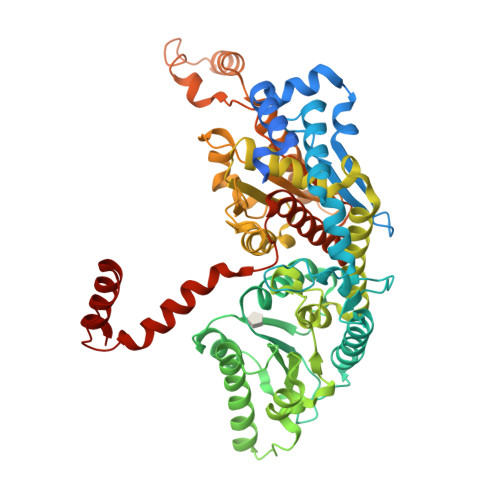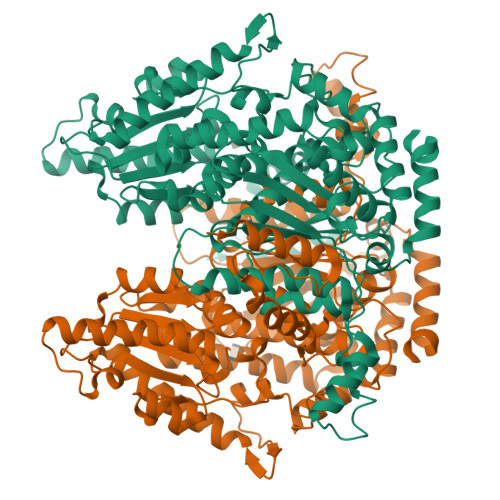The crystal structure of glucose-6-phosphate isomerase from Leishmania mexicana reveals novel active site features
Cordeiro, A.T., Michels, P.A., Delboni, L.F., Thiemann, O.T.(2004) Eur J Biochem 271: 2765-2772
- PubMed: 15206941
- DOI: https://doi.org/10.1111/j.1432-1033.2004.04205.x
- Primary Citation of Related Structures:
1Q50, 1T10 - PubMed Abstract:
Glucose-6-phosphate isomerase catalyzes the reversible aldose-ketose isomerization of D-glucose-6-phosphate to D-fructose-6-phosphate in glycolysis and gluconeogenesis, and in the recycling of hexose-6-phosphate in the pentose phosphate pathway. The unicellular protozoans, Trypanosoma brucei, T. cruzi and Leishmania spp., of the order Kinetoplastida are important human parasites responsible for African sleeping sickness, Chagas' disease and leishmaniases, respectively. In these parasites, glycolysis is an important (and in some cases the only) metabolic pathway for ATP supply. The first seven of the 10 enzymes that participate in glycolysis, as well as an important fraction of the enzymes of the pentose phosphate pathway, are compartmentalized in peroxisome-like organelles called glycosomes. The dependence of the parasites on glycolysis, the importance of the pentose phosphate pathway in defense against oxidative stress, and the unique compartmentalization of these pathways, point to the enzymes contained in the glycosome as potential targets for drug design. The present report describes the first crystallographic structure of a parasite (Leishmania mexicana) glucose-6-phosphate isomerase. A comparison of the atomic structure of L. mexicana, human and other mammalian PGIs, which highlights unique features of the parasite's enzyme, is presented.
Organizational Affiliation:
Laboratory of Protein Crystallography and Structural Biology, Physics Institute of São Carlos, University of São Paulo, São Carlos-SP, Brazil.

















